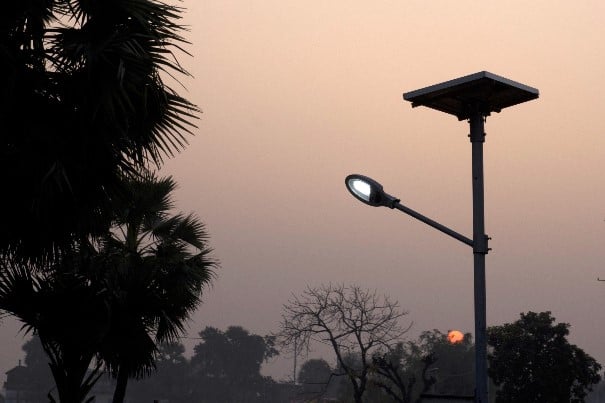In the cities blackouts are frequent, in the rural areas there is often no power at all. The grid doesn’t provide energy access to more than a third of the rural population. Despite a growing economy India as whole is an energy starved country with the national average of 879 kWh per person compared to the UK which is close to 4500 kWh.

India’s most energy starved state, Bihar supports a population of 103 million with just 130 kWh per person. In this very state more than 89% of people live in rural communities and close to 95% of this population either has no access to power or is dependent on kerosene and firewood for primary electricity needs.
Village scheme
Dharnai, a moderately sized village of 2500, has been powerless for 30 years when the grid was cut off due to power shortages. On the 20th July it became India’s first village to secure 24/7 power from a solar micro grid. The idea is for it to serve as a case study for others.
This cluster based micro-grid runs off a 70 kW peak roof mounted solar photovoltaic system located at four different clusters, each with individual battery banks to keep the power on when the sun sets.
Independent of this 60 solar street lights illuminate the 5 km pathway that connects the village and 10 solar based water pumps have been installed which will be used for irrigation purposes by the farmers.
The entire setup is state of the art with complete LED fixtures and domestically manufactured Grade A panels and batteries. The entire set-up took around 3 months to install and start functioning.
So far 250 households have become official consumers of this micro-grid and local volunteers are expecting that the entire 450 will enrolled by the end of next month. The system caters to about 450 households, 50 small shops (commercial setup), 2 schools and a health care center with revenues from the panels used to fund the operation and maintenance of the system.
India offers a solar tariff of 0.08 -0.10 pound per unit (kWh) for the residential consumer ,0.126 pound/unit for the commercial and finally for the irrigation systems its close to 0.35 pound per hour depending on the consumption.
15% Target
The activists and villagers who set up the scheme hope it can be a case study for others – but India isn’t yet pioneering distributed energy.
In 2009 the country said it wanted to source 15% of it’s power from renewable energy by 2020, it’s currently at 8% (30GW), largely thanks to 21GW of large-scale wind projects. Much of the projected growth is similar, more wind and a startling additional 20GW of solar, with 2.5GW to be added next year. Recently the new Indian President, Modi, indicated he wants to go much further – embracing the tools used in Dharnai.
The growth in renewables is matched – or even surpassed – by plans for an expansion of the coal sector in India. The industry is currently mired in corruption scandals amidst ongoing concerns of blackouts due to coal shortages. For Modi, who came to power on a promise of keeping the lights on, the question is – how will he do it?
